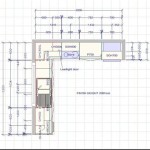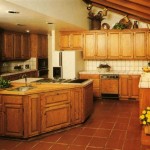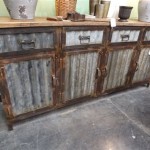Kitchen Cabinets Massachusetts: A Comprehensive Guide
Kitchen cabinets are a foundational element of any kitchen design, influencing both the aesthetics and functionality of the space. In Massachusetts, where diverse architectural styles range from historic colonials to modern condominiums, the selection of appropriate kitchen cabinets requires careful consideration. This article explores the key aspects of choosing kitchen cabinets in Massachusetts, encompassing materials, styles, installation, and relevant considerations specific to the region.
The longevity and resilience of kitchen cabinets are paramount, especially in Massachusetts where homes are regularly exposed to varying temperatures and humidity levels. Material selection significantly impacts durability, maintenance requirements, and overall aesthetic appeal. Homeowners must navigate a range of options, each presenting distinct advantages and drawbacks.
Wood Cabinetry: Timeless Appeal and Variety
Wood cabinets remain a popular choice due to their inherent warmth, natural beauty, and versatility. Several wood species are commonly utilized in cabinet construction, each offering a unique grain pattern and hardness. Maple is a frequently selected option due to its smooth, uniform grain, and its ability to accept paint and stain finishes evenly. Oak, known for its distinctive grain pattern and durability, provides a more traditional aesthetic. Cherry cabinets offer a rich, warm tone and a refined appearance, developing a deeper patina over time. Other hardwoods, like birch and hickory, also present viable alternatives, depending on the desired look and level of durability.
Solid wood cabinets convey a sense of quality and craftsmanship. However, solid wood can be susceptible to warping and cracking due to fluctuations in humidity. Engineered wood products, such as plywood and medium-density fiberboard (MDF), offer greater stability and resistance to moisture. Plywood construction, with its layered structure, provides exceptional strength and dimensional stability. MDF, known for its smooth surface, is an excellent choice for painted cabinets, offering a flawless finish. Often, cabinet construction employs a combination of solid wood and engineered wood components, leveraging the strengths of each material.
The finish applied to wood cabinets significantly influences their appearance and protection. Stain finishes enhance the natural wood grain, while paint provides a uniform color and a durable surface. Clear coats protect the wood from moisture and wear, preserving its natural beauty. The choice of finish should align with the overall kitchen design and desired level of maintenance.
Alternative Cabinet Materials: Exploring Durability and Style
Beyond wood, alternative materials offer distinct advantages in terms of durability, cost-effectiveness, and style. Laminate cabinets, constructed from layers of synthetic materials bonded to a core substrate, provide a durable and easy-to-clean surface. Laminates are available in a wide range of colors, patterns, and textures, mimicking the look of wood, stone, and other materials. Thermofoil cabinets, featuring a vinyl film heat-sealed to an MDF core, offer a seamless and moisture-resistant surface. Thermofoil is particularly suitable for modern and contemporary kitchen designs.
Metal cabinets, typically constructed from stainless steel, offer exceptional durability and a clean, modern aesthetic. Stainless steel is resistant to corrosion, heat, and stains, making it an ideal choice for high-use kitchens. Glass-front cabinets, often used as accent pieces, add visual interest and allow homeowners to display decorative items. Glass can be combined with various frame materials, including wood, metal, and laminate, to complement the overall kitchen design.
The selection of cabinet materials should consider the homeowner's lifestyle, budget, and desired aesthetic. While wood cabinets offer a timeless appeal, alternative materials provide enhanced durability, affordability, and design flexibility.
Kitchen Cabinet Styles: Matching Aesthetics to Architecture
Kitchen cabinet styles encompass a wide spectrum of designs, ranging from traditional to contemporary, each reflecting distinct architectural influences and aesthetic preferences. The selection of cabinet style should complement the overall design of the home and reflect the homeowner's personal taste.
Traditional cabinets often feature raised panel doors, intricate moldings, and decorative hardware. These cabinets evoke a sense of elegance and formality, commonly found in older homes throughout Massachusetts. Shaker cabinets, characterized by their simple, clean lines and recessed panel doors, offer a timeless and versatile aesthetic. Shaker cabinets complement a wide range of kitchen designs, from traditional to transitional.
Contemporary cabinets emphasize clean lines, minimalist designs, and a focus on functionality. Slab-front doors, devoid of ornamentation, are a hallmark of contemporary cabinet styles. Modern cabinets often incorporate features such as integrated appliances, hidden storage solutions, and sleek hardware. Farmhouse cabinets, with their rustic charm and emphasis on natural materials, evoke a sense of warmth and informality. Farmhouse cabinets often feature distressed finishes, open shelving, and apron-front sinks.
The choice of cabinet style should be guided by the architectural style of the home, the homeowner's personal preferences, and the desired atmosphere of the kitchen. Careful consideration of these factors will ensure a cohesive and visually appealing kitchen design.
Cabinet Installation: Ensuring Functionality and Longevity
Proper cabinet installation is crucial for ensuring the functionality, longevity, and aesthetic appeal of kitchen cabinets. Incorrect installation can lead to a variety of problems, including uneven surfaces, misaligned doors and drawers, and structural instability. Employing a qualified and experienced installer is essential for a successful cabinet installation project.
Before installation begins, the kitchen must be properly prepared. This includes leveling the floor, ensuring the walls are plumb, and verifying the location of plumbing and electrical fixtures. Accurate measurements are critical for ensuring a proper fit and avoiding costly mistakes. Cabinets are typically installed in a specific sequence, beginning with the upper cabinets and followed by the base cabinets.
During installation, cabinets must be securely fastened to the wall studs using appropriate hardware. Shimming may be necessary to ensure the cabinets are level and plumb. Doors and drawers must be properly aligned and adjusted to ensure smooth operation. Countertops are typically installed after the cabinets are in place.
The installation process can be complex and time-consuming, requiring specialized tools and expertise. Engaging a professional installer ensures that the cabinets are installed correctly, minimizing the risk of problems and maximizing their lifespan. Furthermore, professional installers are usually familiar with local building codes and regulations, preventing any potential compliance issues.
Massachusetts-Specific Considerations: Climate and Historic Preservation
When selecting and installing kitchen cabinets in Massachusetts, it is essential to consider factors specific to the region, including the climate and the prevalence of historic homes. Massachusetts experiences significant temperature and humidity fluctuations throughout the year, which can affect the performance of certain cabinet materials. Proper ventilation and moisture control are essential for preventing warping, cracking, and mildew growth.
In older homes, particularly those located in historic districts, preserving the original architectural character is often a priority. When renovating a kitchen in a historic home, it is important to select cabinets that are compatible with the existing style and design. Custom cabinet makers specializing in historic preservation can create cabinets that replicate the look and feel of original cabinetry.
Local building codes and regulations may also influence the selection and installation of kitchen cabinets. It is important to consult with local authorities to ensure compliance with all applicable requirements. Furthermore, homeowners associations may have specific guidelines regarding kitchen renovations.
By considering these Massachusetts-specific factors, homeowners can ensure that their kitchen cabinets are appropriate for the local climate, compatible with the architectural style of their home, and compliant with all applicable regulations.
The selection of kitchen cabinets in Massachusetts requires careful consideration of materials, styles, installation techniques, and regional factors. By understanding these key aspects, homeowners can create a kitchen that is both beautiful and functional, enhancing the value and enjoyment of their home.

Massachusetts Design Luxcraft Cabinets

Custom Kitchens Bathrooms I Metropolitan Cabinets Countertops

Massachusetts Design Kitchen Cabinets And Countertops My Soho

Kitchen Associates Massachusetts Remodeling

Kitchen Associates Massachusetts Remodeling

Kitchen Cabinets Ma The Stone Cobblers

Kitchens By Hastings Kitchen Cabinet Remodeling

Our Projects Bel Kitchen And Bath Design

Massachusetts Design Luxcraft Cabinets

Buy Whole Kitchen Cabinets In Massachusetts Usa Cabtec
Related Posts








